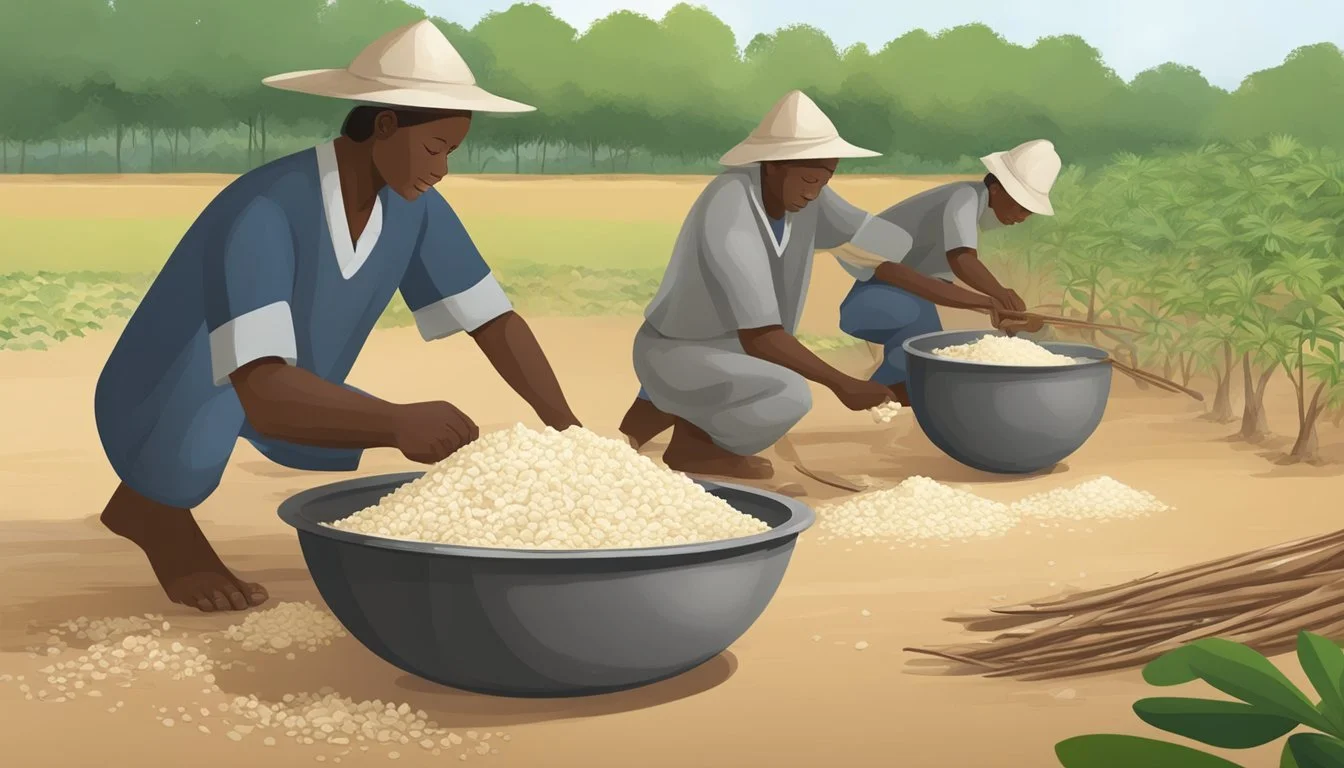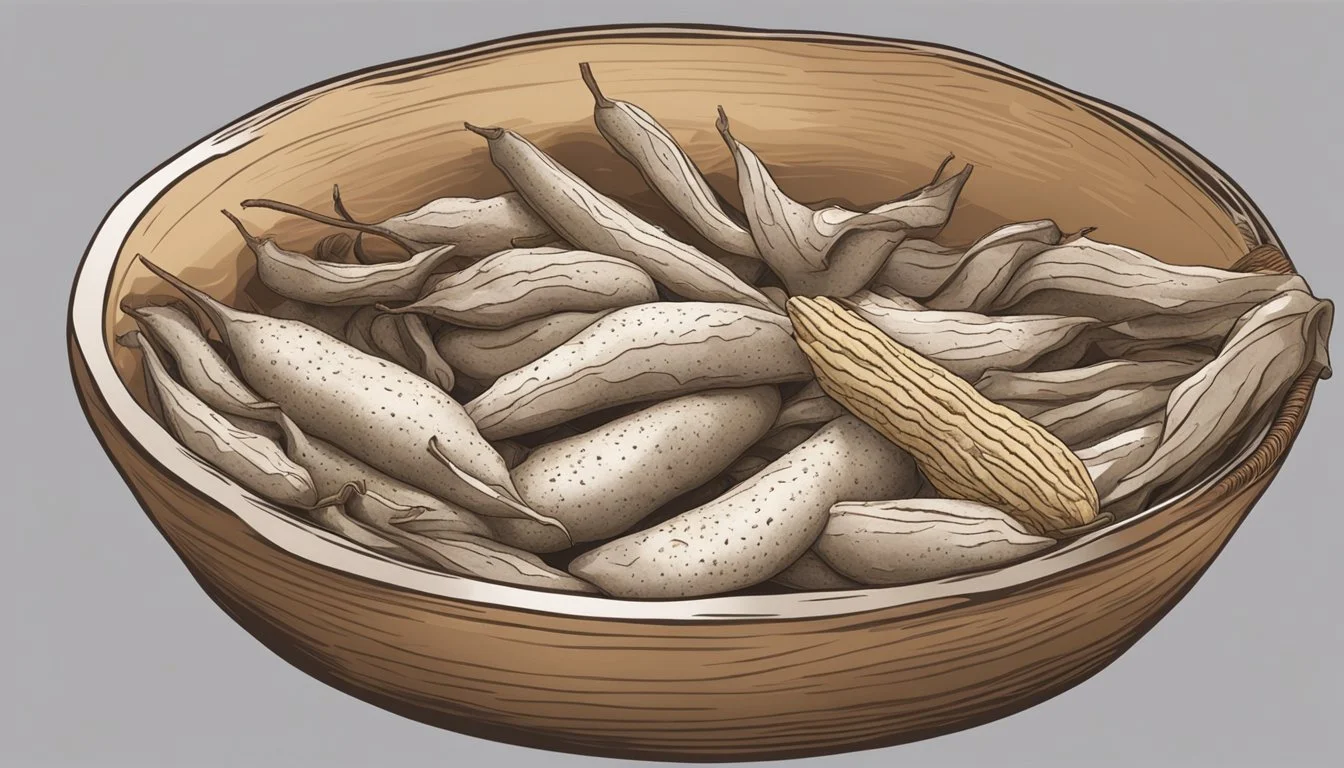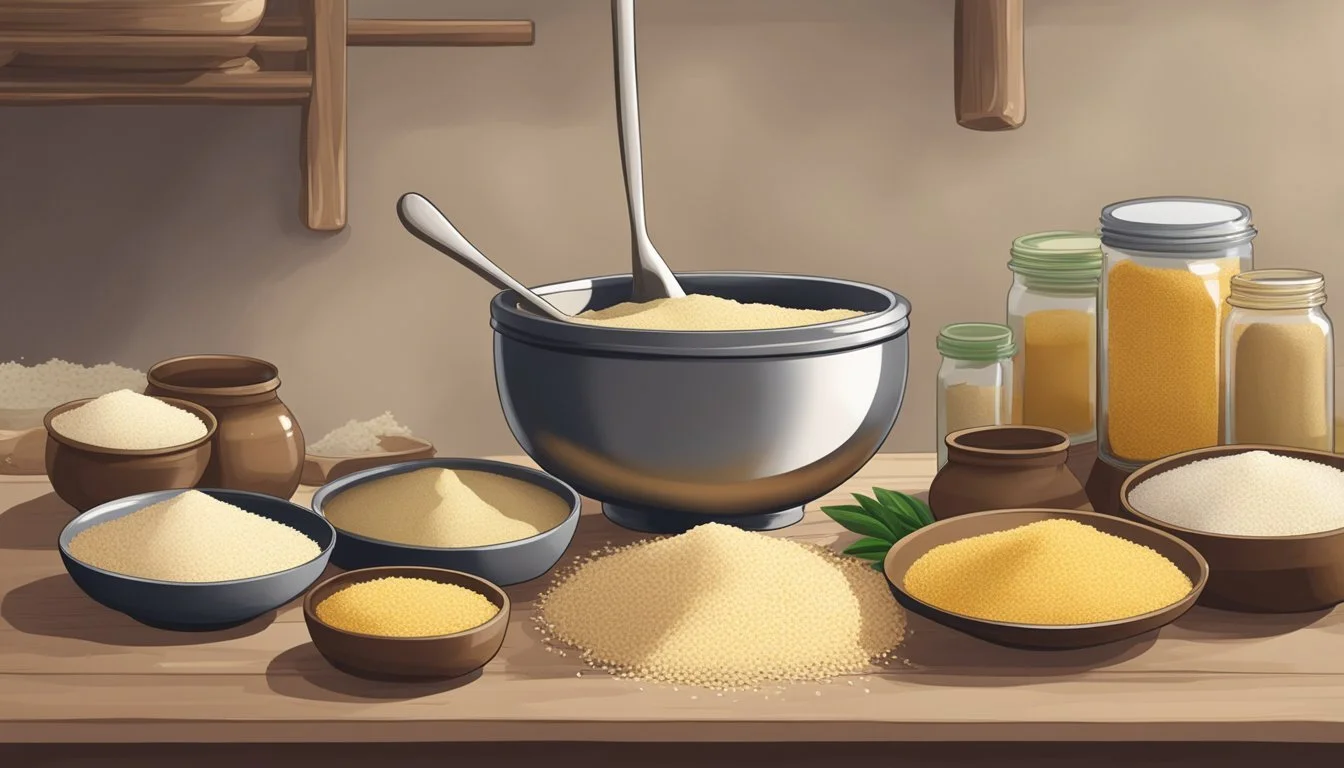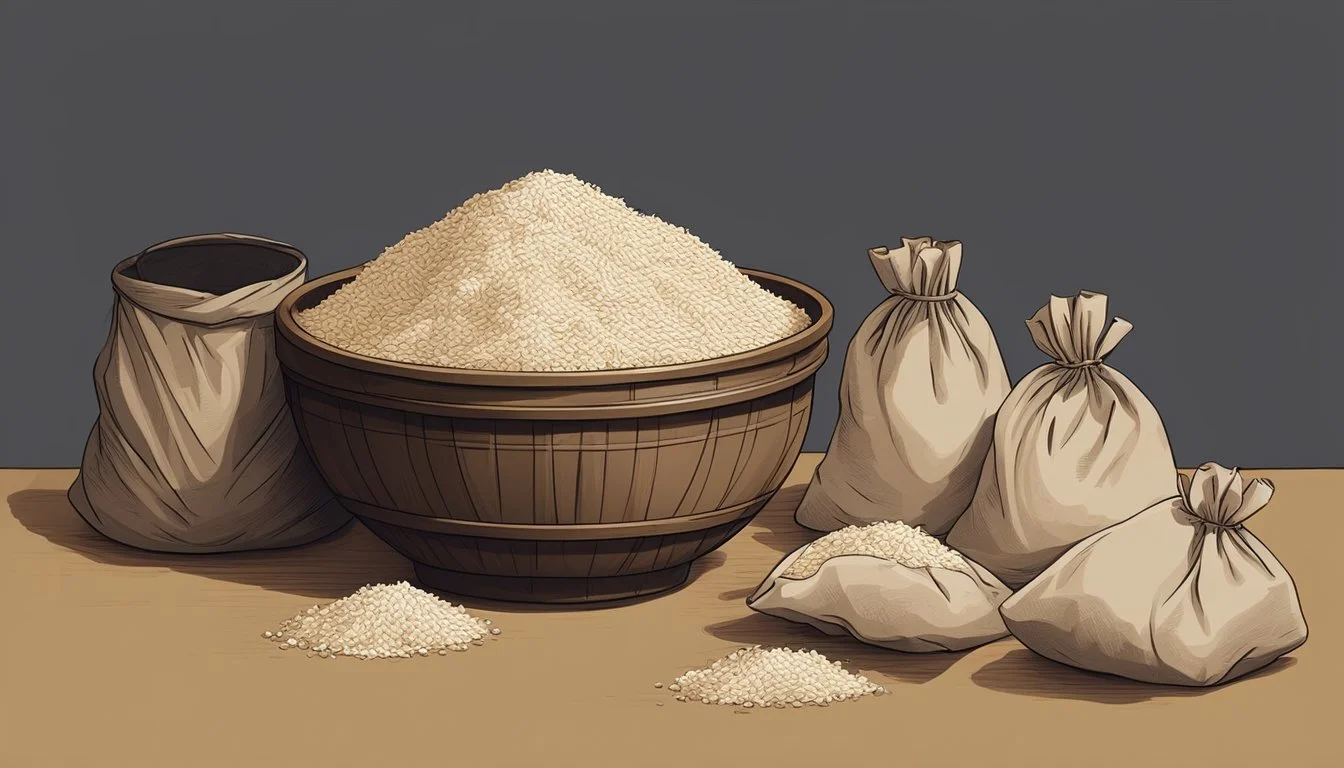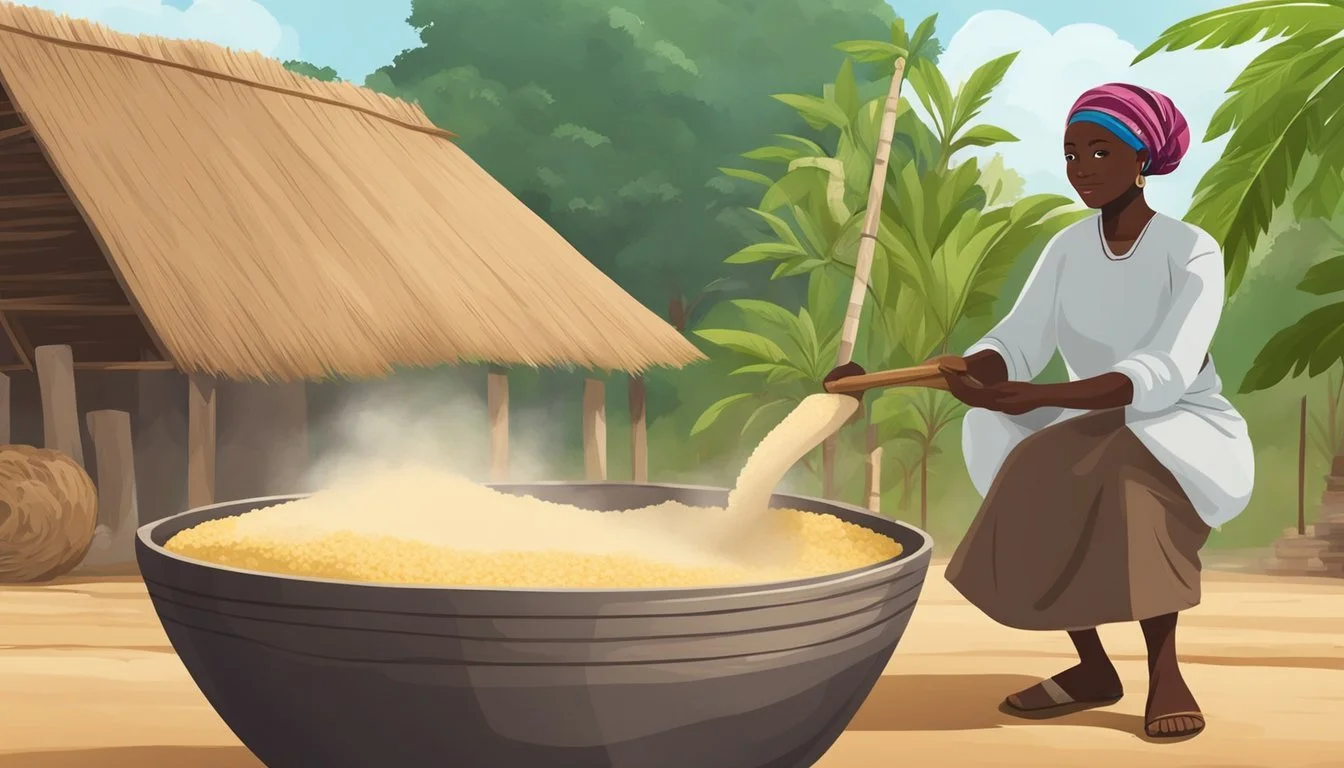How to Ferment Garri
Mastering the Cassava Fermentation Process
Garri, a popular West African food staple made from cassava tubers, is a versatile product that originates from the processing of cassava through fermentation. This fermentation process is not only essential for the development of the distinctive taste and texture of garri but also plays a crucial role in detoxifying cassava by reducing its naturally occurring cyanide content. The preparation of garri involves several steps, starting from the peeling of the cassava roots to the final frying of the fermented product.
The fermentation of cassava for garri production can vary in duration, typically ranging from one to several days, depending on the desired sourness of the final product and the elimination of cyanogenic compounds. During this process, microorganisms break down components within the cassava mash, impacting its taste, acidity, and safety. Distinct types of garri exist, reflecting the diversity in the fermentation period and methods used across different regions.
Precision in the fermentation step is key to achieving high-quality garri. Properly fermented cassava is then further processed by pressing to remove excess water, grating into finer particles, and roasting to obtain the final dry, granular form. The end product is a nutritious and shelf-stable food that serves as an important source of carbohydrates in the diet of many African communities.
History and Cultural Significance
Garri production has deep cultural roots and plays a pivotal role in the sustenance and food security across regions in Africa, particularly in West Africa. This section delves into its origins and ongoing relevance.
Historical Context of Garri in Africa
Garri, a granulated food staple, is intrinsic to West African cuisine and has been for centuries. Its production stems from cassava, a tuber that was introduced to Africa from South America by Portuguese traders in the 16th century. The process of garri fermentation is a testament to traditional methods that have spanned generations, leveraging local microbes to enhance the food's safety and nutritive value. In Western and Sub-Saharan Africa, where garri is especially popular, it is not just a food product but also a reflection of the regions' cultural identity and agricultural ingenuity.
Cassava's Role in Food Security
As Sub-Saharan Africa grapples with the challenges of population growth and the expansion of urban populations, cassava emerges as a crop that fortifies food security. Its starchy roots provide an energy-rich component to diets and are drought-resistant, making them a reliable crop in varying climatic conditions. During times of scarcity, cassava and, by extension, garri serve as a nutritional safety net. The ease of garri production, coupled with its long shelf life, addresses both subsistence needs and market demands, making it a cornerstone in the pursuit of food stability in the region.
Understanding Cassava
Cassava (Manihot esculenta) is a staple root crop known for its carbohydrate-rich tubers. It plays a vital role in providing energy through its high-calorie content, primarily derived from carbohydrates.
The Biology of Cassava
Cassava is a woody shrub in the Euphorbiaceae family, native to South America. It thrives in tropical and subtropical regions across the globe. Cassava plants are chiefly cultivated for their edible starchy tubers, called cassava tubers, which are rich in carbohydrates but low in protein, vitamins, and minerals. The tubers store a significant amount of calories, providing an energy-dense food source.
Varieties of Cassava
There are two primary varieties of cassava:
Sweet Cassava: This variety contains lower levels of cyanogenic glycosides, which turn into cyanide and can be consumed after minimal processing.
Bitter Cassava: This type has higher levels of cyanogenic glycosides and requires extensive processing to remove the toxins.
Both varieties require cooking or fermentation to ensure they are safe for consumption.
The Fermentation Process
The fermentation process of garri involves a complex interaction between microorganisms and cassava, leveraging their roles to both enhance the nutritional profile and ensure the safety of the final product.
Mechanics of Fermentation
Fermentation is a bioconversion process wherein microorganisms such as bacteria and yeasts break down carbohydrates without the use of oxygen. In the case of garri production, cassava tubers are peeled, washed, and grated into a mash. The mash is then left to ferment under controlled conditions, commonly between 24 to 96 hours. During this time, the carbohydrates in the cassava mash are broken down by these microorganisms resulting in a decrease in its pH due to the production of lactic acid.
The process is typically done in a solid state, with the cassava not soaked in water but instead allowed to ferment in piles or heaps. A hydraulic press is sometimes utilized to apply pressure on the fermented mash, aiding in dewatering, which is crucial for achieving the desired texture and moisture content in the final product.
Importance of Microorganisms
Microorganisms play a central role in the fermentation of garri. Specific strains such as Lactobacillus plantarum and Leuconostoc spp., alongside yeasts like Cryptococcus humicola, are integral to the process.
Lactic acid bacteria (LAB) initiate the fermentation process, producing lactic acid which helps in the reduction of pH.
The action of these microorganisms also contributes to the detoxification of cassava by reducing levels of naturally occurring cyanogenic glycosides.
LAB, particularly species like Lactobacillus plantarum, enhance the nutritional value by contributing to the breakdown of anti-nutritional factors.
These microorganisms also play a role in developing the characteristic sour taste and improving the shelf-life of the final garri product. Through their metabolic activities, these bacteria and yeasts ensure that garri is not only edible but also safe to consume.
Processing Techniques
In the production of garri, processing techniques play a crucial role in ensuring the safety and quality of the final product. These methods focus on reducing toxins, achieving the desired texture, and balancing traditional practices with modern advances.
Detoxification and Hydrolysis
Cassava naturally contains cyanogenic glycosides, primarily linamarin, which can release hydrogen cyanide (HCN) upon hydrolysis by the enzyme linamarase. Successful detoxification during garri production is critical to reduce the cyanide content to safe levels. The initial step involves peeling and washing the cassava roots to eliminate dirt and reduce anti-nutrients.
Hydrolysis Process:
Fermentation: To further reduce the cyanide content, the grated cassava is left to ferment between 1 to 4 days. Fermentation not only detoxifies cassava by activating linamarase, which hydrolyzes cyanogenic glycosides into hydrogen cyanide that dissipates, but it also enhances the flavor.
Pressing: After fermentation, the mash is placed in bags and pressed to expel excess water, concentrating the cassava and aiding in the detoxification process by removing more hydrocyanic acid.
Drying and Roasting Methods
After the detoxification phase, the garri must be properly dried and roasted to achieve the correct texture and further reduce moisture content, which is key to the preservation and quality of the final product.
Drying and Roasting:
Drying: The pressed cassava mash, now referred to as a cake, is sieved into grits and spread out to dry to a low moisture content, which prepares it for roasting.
Roasting: The drying step is followed by roasting, traditionally done in a large pot or pan. The grits are constantly stirred to ensure even heating and to prevent burning. Roasting not only dries the garri further but also imparts the distinctive flavor and texture unique to the product.
Traditional vs Modern Methods
When discussing garri production, it's important to consider the differences and similarities between traditional and modern processing methods. Both seek to eliminate cyanide content and produce nutritious, palatable food.
Traditional Methods:
Fermentation Pits: In some places, the cassava mash is placed in fermentation pits or baskets such as those known in different African regions as ikkvunde, inyange, kivunde, or mokopa, and left to ferment under ambient conditions.
Roasting Implements: Techniques involve roasting over an open fire, using implements like large pans for even heat distribution.
Modern Methods:
Controlled Fermentation: Modern practices might involve the use of biotechnology to control fermentation parameters, such as pH and temperature, providing consistency in taste and cyanide reduction.
Mechanical Roasters: These devices offer more consistent heat application and can process larger quantities of cassava, increasing efficiency while maintaining or enhancing quality.
In both traditional and modern methods, the goal is to balance efficiency with cultural authenticity, ensuring that garri remains a staple food that meets health standards.
Improving Nutritional Value
Fermentation of garri, a traditional cassava-based food, enhances its nutritional value by increasing protein content and ensuring the reduction of anti-nutrients. Utilizing specific microorganisms and co-fermentation with certain legumes can lead to a more nutritious product.
Enrichment with Protein and Vitamins
Fermenting cassava to produce garri can be nutritionally enhanced by incorporating protein-rich legumes during processing. The addition of grain legumes not only elevates protein levels but also introduces vital vitamins, including B-vitamins like folates. This form of enrichment is essential because cassava alone is relatively low in protein and micronutrients. By mixing cassava with legumes, such as beans or soybeans, in a 50:50 ratio, the protein content can significantly increase, diversifying the nutrition profile of garri.
Protein Content: Co-fermentation with legumes can increase the protein content up to 3.58%.
Vitamins: Addition of legumes can enrich garri with B-vitamins such as folates, essential for metabolic processes.
Reduction of Anti-Nutrients
Cassava naturally contains anti-nutrients like cyanogens, tannins, and phytate which can interfere with nutrient absorption and pose health risks. The fermentation process actively reduces the levels of these compounds, enhancing both the safety and nutritional value of garri. Several studies highlight the role of lactic acid bacteria in detoxifying cassava by breaking down cyanogens, thereby improving the safety and nutritional quality.
Cyanogen Reduction: Effective fermentation can lower the risk posed by cyanogenic compounds.
Phytate and Tannin Decrease: The levels of phytate and tannins are decreased, which minimizes their inhibitory effects on the absorption of essential minerals.
Through these processes, fermentation not only preserves garri but also transforms it into a safer, more nutrient-dense food, addressing both nutritional enrichment and the reduction of anti-nutritional factors.
Flavor and Texture Profiles
The fermentation process of garri significantly influences its flavor and texture profiles, providing a unique sensory experience through aroma, taste, and consistency.
Aroma and Organoleptic Properties
Fermented garri is known for its distinctive aroma, which is largely due to the organic acids produced during fermentation, such as lactic and acetic acids. These compounds are key contributors to garri's organoleptic properties, affecting its overall sensory perception. The aroma can range from mildly sour to intensely tangy, which is a direct result of the fermentation duration and conditions.
Mild fermentation: Slight sourness with fresh undertones.
Extended fermentation: Pronounced tanginess and a deeper complexity of aroma.
These aroma profiles are crucial for the flavor enhancement of garri, affecting not only its taste when consumed alone but also how it pairs with other foods.
Texture and Consistency Factors
The texture of garri after fermentation presents a granular consistency, which is a result of the dewatering process. The extent of fermentation and subsequent frying or roasting directly impacts its dryness and crunchiness.
Short fermentation: Results in a slightly moist, less granular texture.
Long fermentation: Leads to dryer, crisper granules with a more pronounced texture.
Texture is an integral aspect of garri's appeal, offering varying degrees of mouthfeel and satisfaction upon consumption. Consistency in texture also indicates the proper fermentation and drying of the product, ensuring a high-quality end result.
Health and Safety Concerns
When producing garri from cassava, it is crucial to address health and safety concerns centered on cyanide reduction and the presence of microorganisms. Proper processing methods are of utmost importance to ensure the production of safe and nutritious food products.
Cyanide Content and Reduction
Cassava contains cyanogenic glycosides, which can release harmful cyanide upon crushing the cassava roots. The safety of garri is heavily reliant on the effective reduction of this cyanide content during processing. Fermentation is a key step that reduces the level of toxic compounds, transforming the cassava into a safer consumable product. Adequate fermentation should last 1-2 days, allowing for the dissipation of cyanide as gas.
Microbial Load and Food Safety
The microbial load of fermented cassava products such as garri is a serious food safety concern. The fermentation process must be controlled to limit the growth of undesirable microorganisms, such as bacteria, molds, and fungi, which can compromise both the safety and quality of the garri. Food safety is ensured by strict adherence to sanitary practices during the fermentation, drying, and frying stages to prevent microbial contamination.
Innovations in Garri Production
In the realm of garri production, recent advances have been mainly focused on enhancing fermentation efficiency and end-product quality through biotechnological innovations. This includes the use of genomics to understand lactic acid bacterial roles in the fermentation process and the employment of starter cultures for controlled fermentation.
Biotechnological Advances
Biotechnology has paved the way for significant progress in cassava fermentation, primarily for garri production. Genomic studies have identified specific strains of lactic acid bacteria that are critical in the traditional fermentation process, leading to a better understanding of their functional properties. This knowledge has enabled the optimization of fermentation conditions, resulting in a more consistent product quality and taste. Additionally, biotechnology has facilitated the development of advanced equipment designed to monitor and control the fermentation environment, thereby increasing the efficiency of garri production.
Starter Cultures and Inoculation
The introduction of starter cultures in the garri production process marks a profound shift from spontaneous to controlled fermentation. By utilizing selected strains of lactic acid bacteria, producers can inoculate the cassava mash, ensuring a more predictable fermentation process and reducing the risk of contamination. These cultures are carefully chosen for their ability to outcompete undesirable microbes and to produce garri with favorable sensory attributes. Inoculation with these specific bacteria also helps in reducing the fermentation time, which can have a positive impact on the scalability of garri production.
Through these innovations, manufacturers can achieve a higher degree of control over the fermentation process, leading to the production of garri that adheres to safety standards and meets the taste preferences of a wider consumer base. The application of these modern techniques reflects the ongoing evolution in the field of cassava fermented products.
Packaging and Storage
Proper packaging and storage are crucial for maintaining the quality and extending the shelf life of garri. These processes protect the fermented cassava flakes from environmental factors and contamination.
Preservation Techniques
Garri, due to its low moisture content resulting from fermentation and drying, is relatively stable and less prone to microbial deterioration. However, to ensure prolonged shelf life and maintain its granular consistency, effective preservation techniques are essential.
Leaching: The process of leaching during production helps remove potentially degrading substances, which could otherwise affect storage longevity.
Low Humidity Storage: To prevent moisture uptake and microbial growth, garri should be stored in conditions of low humidity.
Temperature Control: Storing garri at cool temperatures reduces the risk of spoilage and preserves its quality.
Packaging Materials and Methods
The choice of packaging materials and methods is pivotal for food preservation and maintaining the food safety of garri.
Materials: High-quality, food-grade packaging materials such as thick plastic bags, airtight containers, or foil pouches are recommended.
Hermetic Sealing: Packaging methods that involve hermetic sealing offer the best protection against moisture, pests, and contaminants.
Packaging Method: Plastic Bags
Advantages: Lightweight and cost-effective
Packaging Method: Airtight Tins
Advantages: Reusable and rodent-proof
Packaging Method: Foil Pouches
Advantages: Excellent barrier properties
Seal Integrity: Ensuring the integrity of the seal is critical, as any compromise can lead to spoilage and reduction in shelf life. Each packaging approach should prioritize minimizing the infiltration of air and pests while preserving the food product's quality through its storage period.
Final Considerations
In this section, insights into the critical aspects of fermenting Garri are consolidated, along with a projection of future industry trends and the potential challenges that may arise.
Summary of Key Points
The method of fermentation is integral for reducing hydrocyanic acid levels in cassava, making Garri safe to consume.
A typical fermentation process for Garri lasts between 2 to 3 days to achieve the desired flavor and cyanide reduction.
Pressing the fermented mash is crucial to remove excess water, hence concentrating the flavors.
The sieved and fermented mash is then roasted to produce the final granular product that is creamy-white and dry.
Future Trends and Challenges
Future Trends:
Technological advancements may provide more efficient fermentation methods, enhancing safety and quality.
Due to global population growth, there is potential for increased demand for Garri, emphasizing the need for scalable production techniques.
Challenges:
Adhering to food safety regulations is a continuous challenge as production scales.
Food security is a concern; climate change and other environmental factors could impact cassava yields.
References and Resources
For those interested in the intricate details of fermenting garri from cassava, a selection of references and resources is available. These materials can assist individuals in understanding the fermentation process, the role of microorganisms, and the effects on nutritional and safety values.
Scientific Journals and Guides:
Fermentation of Traditional African Cassava Based Foods: Microorganisms Role in Nutritional and Safety Value - This paper discusses the chemical compositions and sensory changes during the fermentation process.
Producing Gari from Cassava - IITA - A pictorial guide created by the International Institute of Tropical Agriculture (IITA) for smallholder farmers on producing gari.
Online Resources:
CABI Digital Library - Offers insights on how gari production increases the market value of cassava and outlines the method of processing.
The Wisebaker - Provides comprehensive guides which detail methods of gari fermentation, including practical tips on removing cyanide content.
Academic Contributions:
Research on Micro‐organisms Associated with Cassava Fermentation for Garri reveals the types of microorganisms prevalent during the cassava pulp fermentation and their impact.
Further study can be conducted through the following portals:
Google Scholar for a wide range of scholarly articles on cassava fermentation.
ResearchGate for in-depth research papers and findings from academics around the world.
These references should serve as a foundational starting point for understanding the process and science behind fermenting cassava into garri.
About the Author
The author of this article is a food technologist and skilled fermentation specialist, with over a decade of practical experience in traditional and modern food processing techniques. They hold a Master's degree in Food Science and Technology, and their work focuses extensively on the fermentation of indigenous African food products, particularly cassava-based foods like Garri.
The author has contributed to several peer-reviewed journals, documenting the nuances of microbial roles in enhancing the nutritional and safety values of fermented foods. (What wine goes well with fermented foods?) Their expertise extends to optimizing fermentation conditions to maximize yield and maintain consistency in product quality.
Experience: Professional Tenure
Details: Over 10 years in the food processing industry
Experience: Education
Details: M.Sc. in Food Science and Technology
Experience: Research Focus
Details: Fermentation processes, microbial analysis, food safety
Recognized for their authoritative and neutral stance on food safety standards, the author has been a consultant for various agro-processing firms, advising on best practices for cassava processing and Garri fermentation.
The combination of the author's academic knowledge and hands-on experience provides a solid backbone for their insightful and informative guidance. Through their clear and precise writing style, readers benefit from a wealthy reservoir of fermented-food wisdom, ensuring that both novices and seasoned processors can apply effective fermentation techniques for Garri production.
Acknowledgments
In the production of this comprehensive guide on fermenting Garri, the writers wish to extend their sincere gratitude to a diverse group of individuals and organizations whose contributions have been invaluable.
Contributors:
Agricultural Researchers: Their expertise in cassava cultivation and processing has laid the groundwork for the methodologies described.
Local Cassava Processors: They have shared practical insights, reflecting their extensive experience with Garri fermentation.
Special Mentions:
The International Institute of Tropical Agriculture (IITA) has been instrumental in providing scientific guidance and best practices for cassava processing.
Regional farmers' cooperatives have cooperated by providing access to farms and facilities for first-hand observation.
Technical Support:
The Wisebaker Team: For elucidating the precise fermentation techniques that assure the removal of cyanide and enhance flavor.
Food Safety Experts: Who ensured that the fermentation protocols detailed are aligned with health and safety standards.
The knowledge dispensed throughout this article would be less rich without the continuous exchange of information between field practitioners and academic researchers. It is through their collective effort that traditions merge seamlessly with modern practice, allowing efficient and safe Garri processing to be shared widely.

